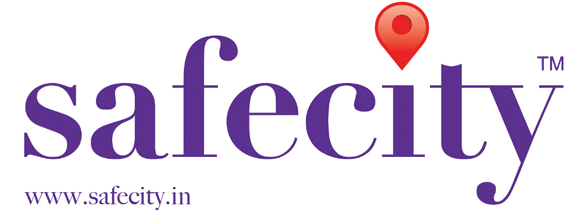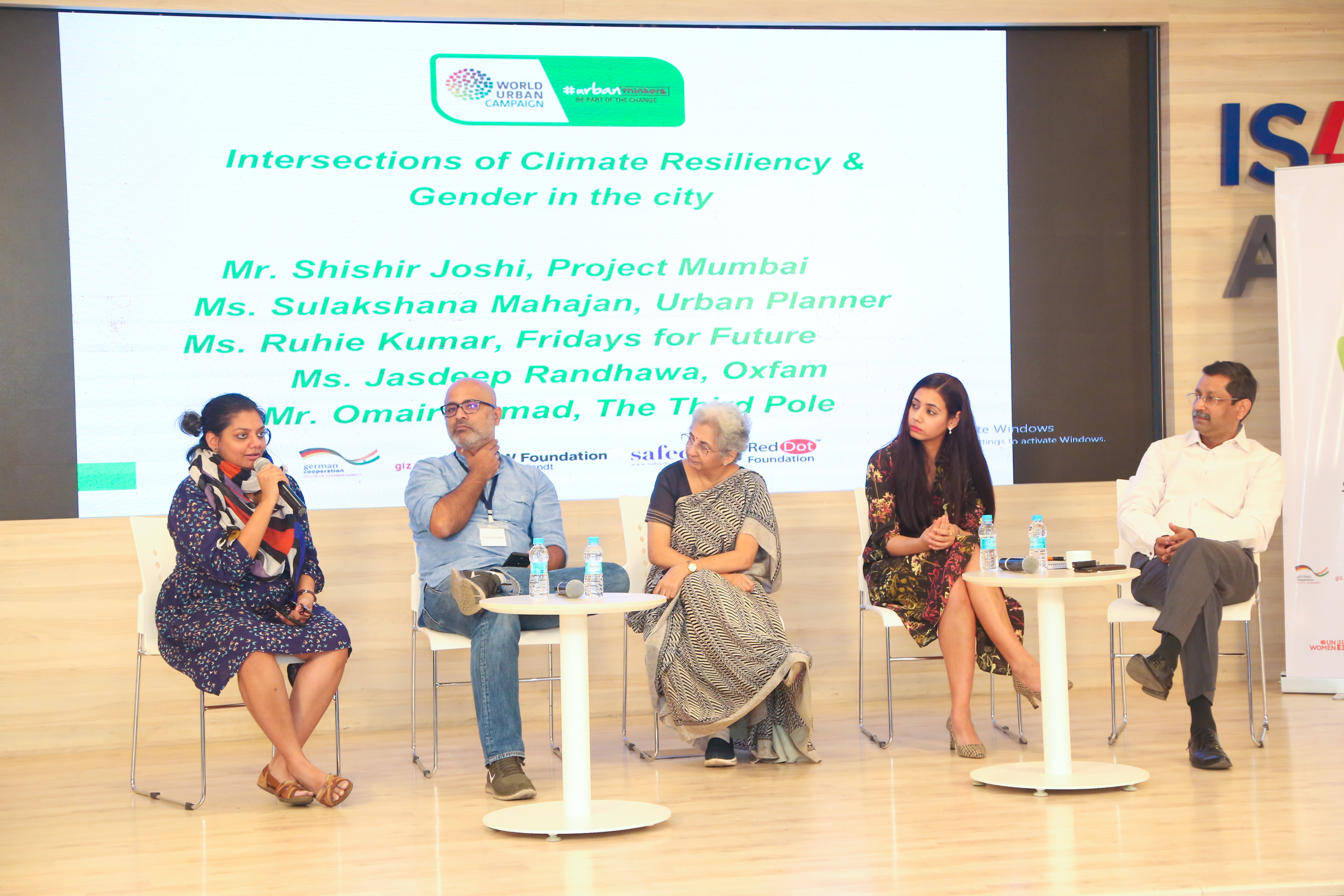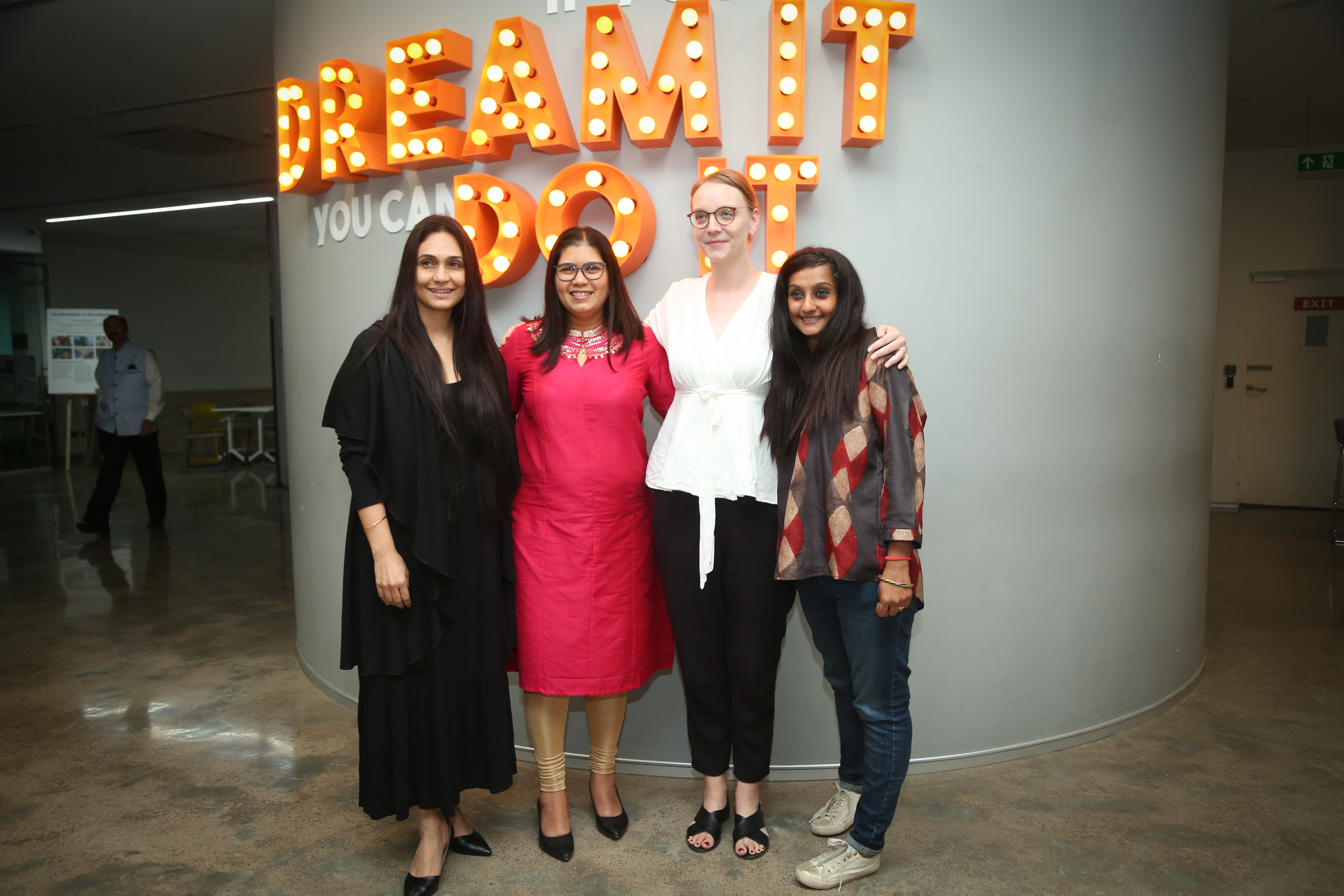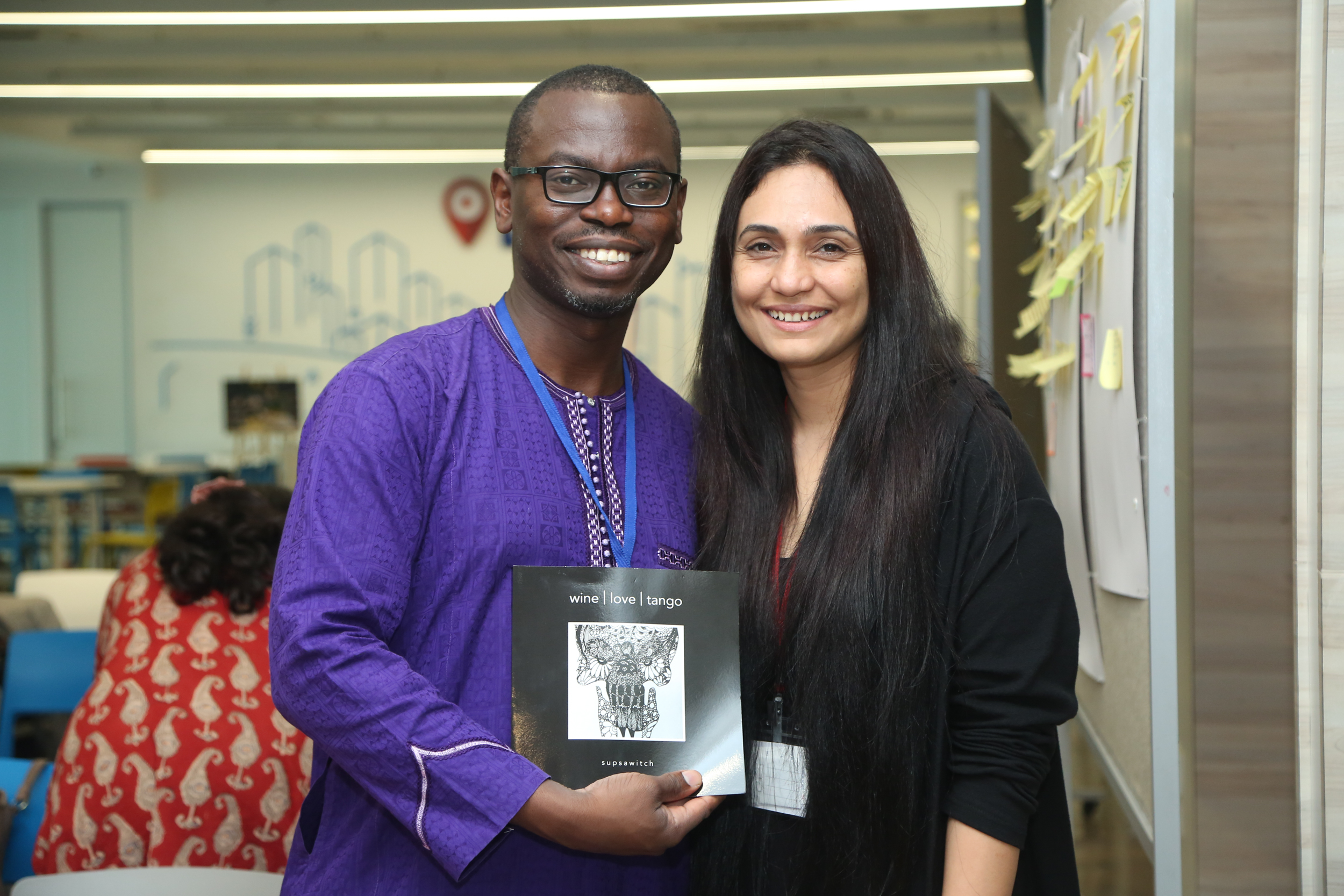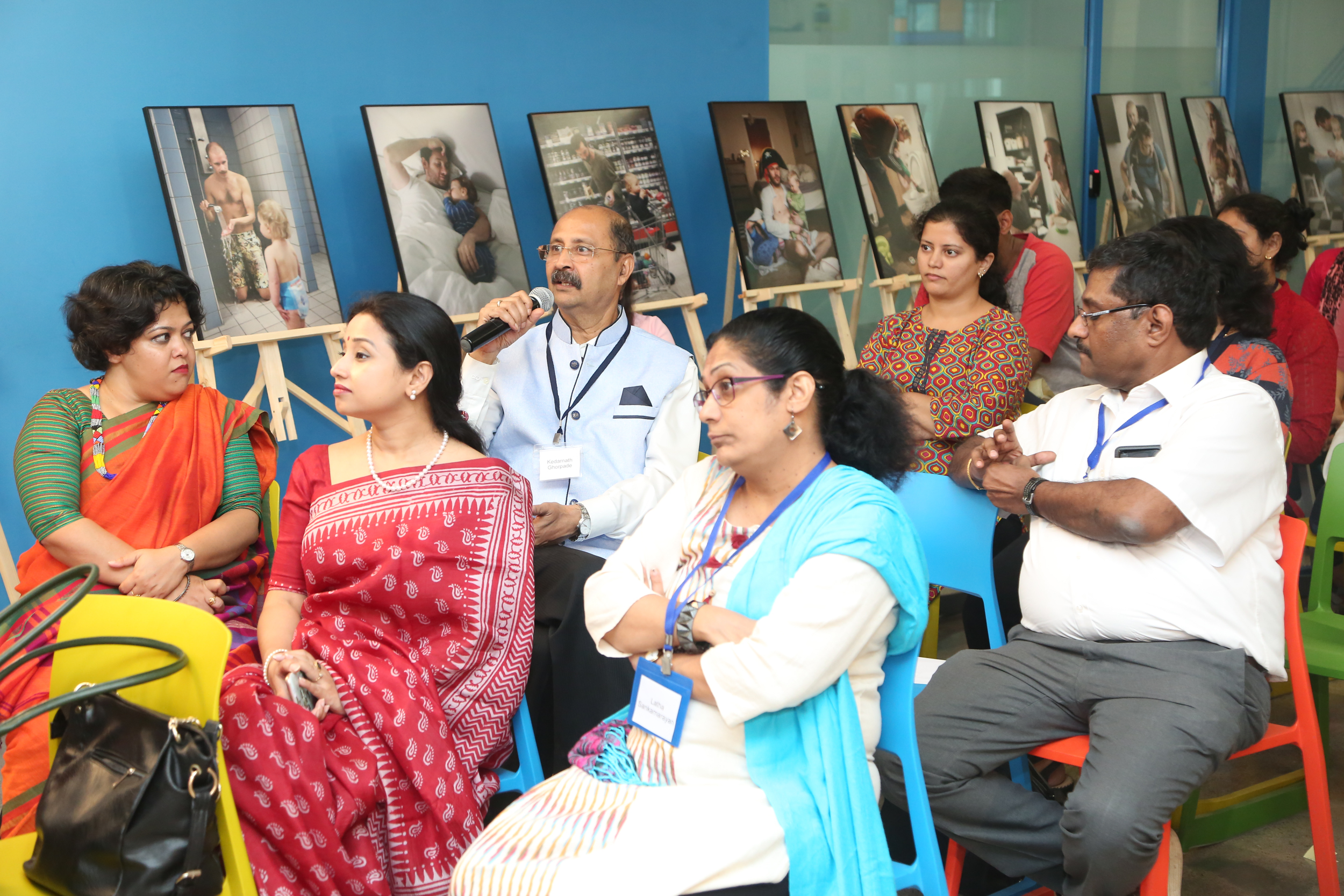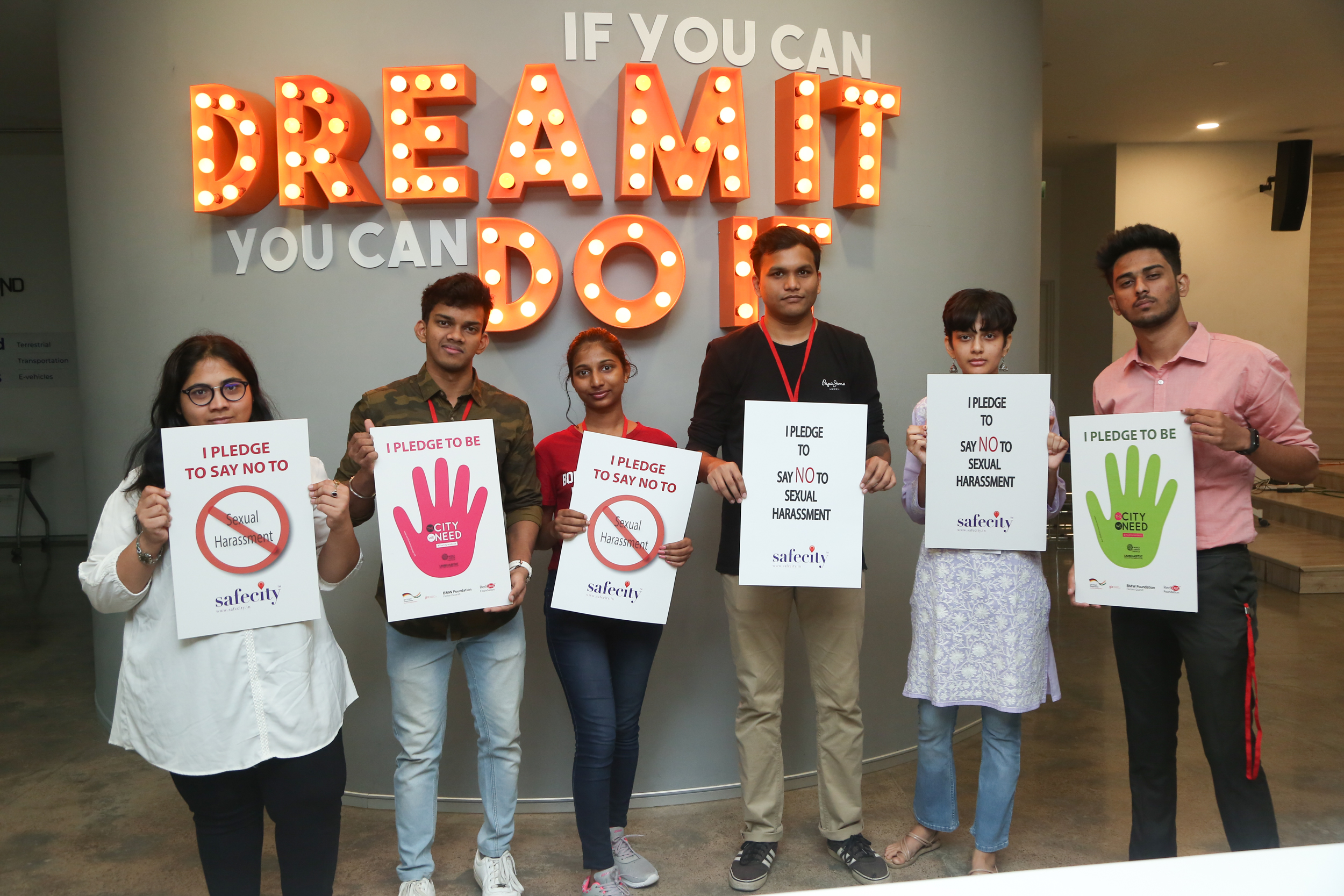Urban Thinkers Campus 2019 – Safe Public Spaces
Title – Safe Public Spaces from a Gender and Climate Resiliency Lens
Organizer – Red Dot Foundation (Safecity)
Sponsors – GIZ India and BMW Foundation Herbert Quandt
Partners – The Urban Vision, Developmatrix, Nappinai NS, The Danish Intercultural Institute, All India Institute for Local Self Government, ISDI, UN Women India
Date – 25 – 26 November, 2019
Executive Summary
Red Dot Foundation hosted a two day Urban Thinkers Campus – Safe Public Spaces from a Gender and Climate Resiliency Lens – on behalf of UN Habitat’s World Urban Campaign. The event was supported by GIZ India and BMW Foundation along-with knowledge partners Urban Vision, Developmatrix, The Danish Cultural Institute and Nappinai NS. It was held on 25 – 25 November, 2019 at ISDI ACE, Mumbai.
The Urban Thinkers Campus (UTC) model is a stage for exchange of thoughts and opinions between all stakeholders and partners to promote sustainable development and urbanization. Globally 37 UTCs were approved for 2019 and we were honoured to be one of four in India.
Using the appreciative inquiry method of Discover, Dream, Design and Develop the two day programme was designed to be participatory with innovation labs, case studies and thought leadership panels. The main aim of the event was to bring diverse stakeholders from business, government agencies, civil society and academia to deliberate on the challenges and jointly develop action plans for implementation within organisations. A curated group of about 100 people from the various sectors were invited to participate on both days. The participants were invited to explore the topic through different problem-solving techniques, design-thinking exercises and were asked to ideate solutions that would be safe, sustainable and inclusive.
DAY 1
Day 1 began with an introduction to the UTC by Ms. ElsaMarie DSilva, Founder & CEO of Red Dot Foundation. This was followed by a participatory small group session by Ms. Rukmini Iyer, Founder & CEO of Exult Solutions on “Breaking Barriers” which explored what each person’s views were on what makes them feel safe, unsafe and the strategies they used to keep themselves safe. This set the context for the discussions that followed as lived experiences in public spaces and its relation to safety were identified. The keynote by Mr. Juma Assiago, Safer Cities Program, UN Habitat helped us understand the New Urban Agenda and the role each one of us including cities can play in achieving SDG 11 – Sustainable Cities and Communities. He shared examples from around the world where citizens and cities were addressing rapid urbanization and safety from a gender lens.
The first Panel discussion on Encouraging Economic Empowerment for Women, further explored how we can make policies more inclusive and the importance of economic empowerment of women for agency and access to rights. Safety in cities is paramount for an increase in women’s participation in the economy and this in turn would encourage more leadership for a gender perspective in policy making.
The next session were three case studies on real life scenarios of urban issues – The Park, The Mill Site and The New Township which explored last mile connectivity, abandoned urban spaces and spaces which were not maintained well that were hotspots for violence. The participants were asked to deliberate on key questions from the perspective of different stakeholders like Police, Government agencies, Real Estate Developers, Philanthropists, Media, Corporates, NGOs and others. It was an interesting exercise that helped people open their minds to new perspectives and think out of the box for solutions.
The final panel for the day was on Sustainable Mobility which explored safety of women, mass transport options that are safe and sustainable, cyclability and walkability in a city. The day ended with a performance by Aditi Mittal, a comedienne who spoke of her experiences in a city as a woman and the challenges faced due to gender stereotypes and socio-cultural conditioning.
Action Points from Day One
- Financial literacy must reach the most vulnerable who are traditionally involved in informal labor systems.
- Women representation must go beyond physical presence and should include active women leadership opportunities.
- Women in positions of power should seek to use their unique experiences and voice to enable not only their own kind, but also those they find under represented.
- Awareness and Advocacy on the multi identities that encompass gender today is the need of the hour.
- Early school learning can be a preventive measure against gender biases and stereotypes.
- Gender sensitivity at all levels can influence policy making to be more inclusive and holistic.
- Rapid urbanisation demands policy making that leaves no one behind. It must take into account safety of women, mass transport options, last mile connectivity which is safe and convenient and have a gender lens.
DAY 2
Day 2 began with a recap of the previous day’s events and key learnings. This was followed by a welcome address by Ms. Nishtha Satyam, Deputy Country Representative UN Women India on the occasion of 16 Days of Activism to end gender based violence. She emphasised the importance of Safe Cities and Public Spaces. Ms. Barbara Mueller gave a presentation on Responsible Leadership and how individuals can be agents of change to achieve the SDGs within their organisations. Keynote speaker Dr Hasnale, Assistant Commissioner Planning of Municipal Corporation of Greater Mumbai shared how the organisation was encouraging women’s economic empowerment through facilitation of government schemes and access to finances as well as making the city more inclusive for all.
The first panel discussion explored the impact of Urban Design on Safety and the second panel discussion explored the theme of climate resiliency from a gender perspective. Both these panels built on the discussions from the previous day and honed in on current policy gaps as well as highlighted inspirational examples on the ground that were making a difference.
The participatory sessions were led by The Danish Cultural Institute, The Office of Nappinai NS and Urban Vision which was based on surveys carried out the previous week in the city by student leaders. The survey collected information on a gender toolkit for city planning, security policies for data collection and urban infrastructure gaps. The participants were divided into three groups and were asked to brainstorm ideas on the challenges presented and then were introduced to a world cafe exercise so that they could bring diverse perspectives and insights into all three challenges. The challenge holders were facilitators and guides during this exercise and were very pleased with the suggestions that were put forward by the group.
The day ended with a final performance by Ms. Priya Malik, Actor and Activist who read out a few of her poems on women’s empowerment and rights.
Action Points from Day Two
- Group participation through the Innovative Design Thinking was most appreciated by all.
- Public Spaces are the responsibility of all, and thus mandates active participation from each individual.
- The youth are eager to become agents of change when enabled with knowledge resources.
- Multi-stakeholder initiatives are of primary importance to achieve a safe public space.
- Learning about different methods, frameworks, and research in a focussed group highlighted the importance of forums like UTC.
Innovation Labs & Case Studies
- Lab 1 – Urban Mobility
Question addressed in the Innovation Lab – What are the steps to be taken to improve urban mobility (for the given site) via pedestrianization?
The innovation lab was based on the case study of a popular public space in the city, which had to be surveyed to understand its current challenges as a piece of public infrastructure. The survey explored how users respond to it and feel about the space. Based on the findings of the survey all the participants at the innovation lab were to brainstorm and ideate as to how to transform the space and tackle the challenges outlined during user survey. The brainstorming needed to include not only changes from design perspectives but also other changes that could be implemented at a governance and policy level. The ideas needed to be holistic that could be applied throughout the city.
The diversity amongst the participants, professionally and in their age groups allowed for wide range of inputs and insights into challenges of city’s basic public infrastructure. The footpaths and streets were a major focus. The group came up with a series of design and policy driven solutions that could help us devise a change our city for better mobility and through its primary focus on pedestrianization.
The participants outlined 3 broad umbrella parameters that were urgent needs to transform the city. Below is the highlight the outcome of the innovation lab
- Due to various governing bodies as stakeholders for our public infrastructure, there is a constant political tussle that makes for dysfunctional governance. Some of our major issues especially regarding poor quality of public works is due to the above said discrepancies as a part of our system. The lab concluded that one of the solutions is to create an apex body that would regulate and keep all these various stakeholders on the same page at a micro (ward) and macro (city) level.
- A specific design code should be put in place for better street space management. This needs to be followed very stringently like any other rule as per the DCR.
- As a design input, digital integration is extremely necessary as part of our infrastructure. This would not only bind people to be disciplined but also regulate the use of our public infrastructure.
The participants arrived at a conclusion that changes should begin at a policy level that would eventually be tied to a regulated design code. Further innovative and user-friendly design options could be interwoven at the micro level. This could prove to be a holistic change for transformation of any piece of public infrastructure at the city scale.
Lab 2 – Toolkit on Gender and The City
The innovation lab was based on the toolkit “Gender and The City” which allowsed for surveys in public space to be conducted with a specific focus on gender and space. The participants were asked to prototype a space survey, which included them choosing, discussing and negotiating the location as according to necessity, importance and manageability. The participants prepared their prototype and presented to other workshop attendees.
During the discussions many interesting aspects arose, including choosing a certain space to study would entail conscious decision making on focus, necessity and blind spots.
Thinking in unison with many voices included allows for more critical perspectives to arise. Having a diverse array of participants with different backgrounds and professions helped ignite these discussions, as well as opening up for potential blind spots.
Lab 3 – Virtual Spaces and Safety
The Red Dot Survey questionnaire on “Digital Privacy Protection” was primarily aimed at ascertaining peoples awareness of “Digital Privacy” and their interpretation and / or understanding of their right to privacy in the cyber domain. The survey questions covered general queries on the participants awareness of what digital privacy rights they have; cyber hygiene when it came to use of external devices or public/ free WiFi and what kind of data and information do the participants, knowingly / unknowingly share on a daily basis, such as contact information, email address medical or financial information etc.
The survey results disclosed that although most people were aware of their “right to privacy” in the cyber domain in the general sense, there is still a lot of ambiguity with respect to enforceability of this right. The survey results also disclosed that whilst most participants were aware of the kind of data and information and the volume thereof that they themselves voluntarily disclose, there does not appear to e any application of mind or correlation with how said information and / or data can thereafter be misused.
Case studies on Last mile connectivity, derelict and abandoned spaces
- Lighting plays an important role in perception of safety.
- Urban planning for activities to ensure more women are visible and active in a public space at all times of day and night. This could be facilitated by allowing female vendors and hawkers in to the space.
- Increasing foot traffic through an area (by diverting the commuters from a local station in the present case) will increase safety and use of the space.
- Increased awareness regarding the possible crime and history of a location/space increases vigilance and deters crime.
- Understanding ongoing or previous litigation of a certain space will better explain its context, history and the possible vested interests involved with the up-keep and maintenance of a space. This also gives an idea as to which parties are to be approached for developing a space and what the timeline of development will be.
- Involving all stakeholders and interested parties is key (this includes philanthropists, social workers, urban planners, the police, the commuters, the owners of the space and property developers, surrounding large and small businesses and city government and municipal corporation officials).
- Last mile-connectivity can make a lot of difference for women who travel considerable distances into Bombay city for daily work. Buses or vans to take them to and from public transportation can drastically increase the number of women willing to avail of these safe and economically-conscious options.
- Correspondingly, once there is an increase in possible modes of transport, it will increase the presence of women out at hours in the night, which will in turn make the spaces safer for other women as well.
- Sustainable mobility through the use of cycles must be accompanied by an incentivising system by the corporate sector. Building showers at work, cycle parking and corporate rewards in exchange for choosing a more environmentally conscious method are effective incentives.
- Brighter lighting, CCTV cameras and more authority figures have proven to make a big difference in making a space safer. Women often find that even if they are able to evade a perpetrator of crimes or misdemeanours, they are unable to find an authority nearby to report to.
- Endeavours such as Biz Sakhi allow individuals to receive specialised vocational training and also provides them with the tools to further train other individuals and keep the chain of information and knowledge going, even to a grass root (village) level.
- The introduction of a nominal entrance fee can make a significant difference to the mentality of users of a space. They begin to display signs of ownership over spaces that they’ve paid an entrance fee to and as a result they tend to take better care of these spaces.
- Utilising the spaces underneath fly-overs and cross-walk islands in the city to become gardens or resting spaces is also a way of beautifying the space and effectively cleaning-up the smaller, dimly lit unsafe areas in a city. There have been instances where these refurbished spaces have been vandalised. However, possible inclusion of homeless people and surrounding street artists in the cleaning up exercise could help create a feeling of belonging and ownership over the spaces.
- Urban residential planning must be done in a manner such that the interests of all parties in the area are accommodated. This includes people living outside the actual area but travel here for work such as the helping staff (cooks, maids, drivers, gardeners, etc).
- It is not enough that women just work or find jobs. Empowering women includes mental empowerment through the removal of inherent and intrinsic biases that women impose upon themselves. Until the perception that certain jobs are meant for women and certain jobs are meant for men changes, women will not be truly empowered.
Key Outcomes of the UTC
- Encourage active women participation across stakeholders – The role of women in decision making process cannot be underestimated. However, it is imperative to look beyond representation and ensure an environment for her voice to be heard, with opportunities to lead on projects that can create safe spaces. Men need to be sensitized in the stereotypes they further when delegating roles to women based on age old gender norms. By ensuring active women participation, not only will there be an increase in inclusive models of design, policy frameworks, and governance , but it will lead to economic empowerment of women.
- Strengthening the Existing Infrastructure – There was much debate on the quality of infrastructure that already exists. A key takeaway was the inaccessibility and maintenance which further deteriorated the public space. This therefore encouraged instances of crime thereby making the public space unsafe. By investing in a pre existing design space, two objectives are met. First, it elicits citizen involvement and advocates for responsibility of the designers as well as users. Second, government authorities and funding agencies would be more likely to support projects which utilize existing opportunities.
- Awareness and Advocacy for Citizen Participation – A public space has an integral role for citizen engagement, which is presently not fulfilled to its potential. For instance, active forums where members of the public engage with spaces created to further community systems of support go unused due to lack of interest, elitist attitudes, and general apathy towards the space. Without use, the most well designed space can deteriorate. Various cities are experimenting with No Drive Sunday, City walkathons, heritage walks, bicycling tours. If members of the public to encourage these various initiatives and further create forums with like minded community members it would benefit all stakeholders.
- Enabling multi disciplinary involvement in the Design Process – Discussions with participants and panel members who represented varied academic and professional backgrounds all concluded that the need for multi disciplinary engagement was an urgent need of the hour. Due to the traditional practice of stakeholders working in isolation across government departments to design firms, community organizations, and academic institutions there were diverse issues which could be solved through collaboration. A safe public space needs holistic investment and if these traditional practices were replaced with a more inclusive and involved process, sustainable change could be achieved.
- Identify diverse spaces which are public as well as safe – There is a strong belief that a public space is either a park or a hygiene facility. This misconception was stressed upon and a call for going beyond the park as a public space was sought. Transport centers, traffic light junctions, institute campuses, residential premises as well as virtual spaces were other public spaces that were identified. By broadening the scope of a public space, more community members would be encouraged to contribute through above engagement.
- Use of Climate Sustainable Resources – There is enough evidence to support the climate crisis the planet is facing. India is considered to be one of the top five countries to be most vulnerable to climate change. This alone should be a cause of worry for many. Introducing sustainable resources on existing as well as future projects is one way to mitigate the environmental damage. Further, encouraging the use of public support, environment friendly alternatives like cycling short distances instead of driving or using private transport are other ways individuals may contribute in the fight to save the rapidly depleting resources.
- Promoting Financial literacy for women – A shift in gender norms must also allow for women to be economically empowered. The rise in women’s employment must not be restricted to that of the privileged class only. Promoting financial literacy within the informal working group is paramount to ensure their safety. Financial literacy also ensures that women have access to resources – finance, knowledge and other resources – to give them choices. Currently, most schemes to assist and aid women treat them as mere conduits to provide money to the family. They do not translate to actual empowerment or jobs for the women. This must be addressed through a ground-up approach. There should be an analysis of the sectors in which women’s contribution and inputs are the most valuable and then funds allocated accordingly.
- Urban Design Forums – Engagement forums where urban designers with diverse specialties can share their expertise and seek further learning from others would greatly benefit an integral component of creating a safe society. These design forums can also be used to bring in other stakeholders for better management and execution of the designed product. It is critical to have a multi-sectoral approach to problem solving.
- Informed Activism Session at various learning institutions – It is imperative with the climate crisis looming large that future generations are provided with the right knowledge resources to become agents of change. Including academic institutions and reviewing existing resource material is the first step towards an empowered generation of activists.
- Access to All – Urban spaces tend to have restrictive access for the vulnerable and destitute. Those with physical and other disabilities are further vulnerable and are overlooked in the design process. When aiming for an inclusive society, all must be given equal consideration and therefor equal access. This can be achieved by ensuring all voices are heard and enabled during the decision making process.
Conclusion and Way Forward
- Gender – Gender today has moved beyond the traditional binary concept based on biology. With changes in the definition, policies and designs must also change. However there is a vacuum that needs to be first acknowledged and then together work towards overcoming. The panel discussions and innovation labs largely focussed on this need. They concluded that the multiple gender identities when actively represented, will create a ripple effect on the policies and procedures that are intended to benefit society at large. A lot needs to be done to fill the gap, and it needs to be done simultaneously across the multi levels of society with the support of government systems, institutions, and community organizations. Creating a safe space virtually as well is paramount for the many voices to share their lived experiences, along with the challenges they faced and the ingenious and innovative measures they undertook.
- Safety – Much like gender, even the concept of safety has undergone radical changes. It can no longer be said that safety concerns itself with only public spaces. The virtual world is just as dynamic, and faces issues of safety that still needs stringent regulations. Cyber security thus needs to be given equal focus as public safety. There is also an urgent need to curb the online fake news phenomenon which poses great risk to people navigating public spaces.
- Environment – The climate crisis was an integral discussion topic of the campus. Urban designers promoted the use of sustainable materials and resources, finding innovative alternatives in daily use products. Participants looked to substitute private transportation with public and were enthusiastic to initiate climate change discussions at their respective academic institutes and professional organisations.
- Governance – The call for inclusive access to all needs government interventions to sustain a consistent change. Representations of varied community members, across gender identities, economic capabilities, and domain knowledge would enable in creating a systemic change. Moreover, government institutions need to be sensitized on multiple issues discussed in the UTC, particularly those pertaining to climate resiliency and gender inclusivity.
- Urban Design – Urban design when achieved with a holistic approach, provides for many positive outcomes of safety, security, community ownership, and sustainability to name a few. The norm of multi-stakeholder led design process is yet to be achieved, and a concern of complex government procedures, insufficient funding, and traditional mindsets is further challenging it. Advocacy and engagement groups shall help initiate pilot projects, which in turn will create opportunities for further funding and innovation.
Sustainable Development Goals addressed during the UTC
The UTC incorporated the following Sustainable Development Goals:
-
- SDG 5: Gender Equality,
- SDG 8: Decent Work and Economic Growth
- SDG 9: Industry, Innovation, and Infrastructure
- SDG 11: Sustainable Cities and Communities
- SDG 13: Climate Action
- SDG 16: Peace and Justice Strong Institutions
- SDG 17: Partnerships to Achieve the goals
